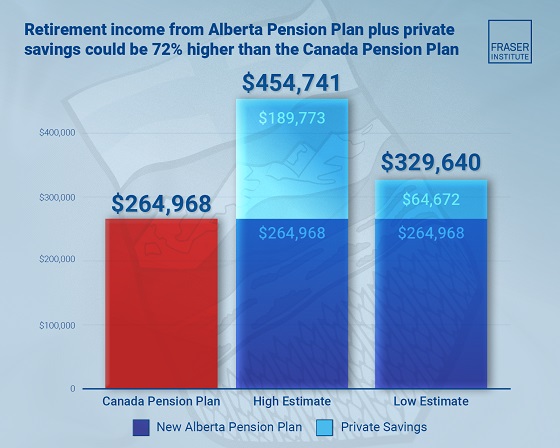Alberta
What are the new COVID19 measures and who do they effect?

Can we have dinner with our close friend? What exactly is a Cohort anyway? Is it true that we can go swimming even though we can’t play hockey?
We pulled this information From Alberta.ca to help make sense of the new health measures in the areas of Alberta most affected by COVID19.
From the Province of Alberta
Who is affected?
| All purple zone areas | Calgary Area1 | Edmonton Area1 | Fort McMurray | Grande Prairie | Lethbridge | Red Deer | |
|---|---|---|---|---|---|---|---|
| No social gatherings inside your home or outside of your community | Yes | Yes | Yes | Yes | Yes | Yes | Yes |
| 15-person limit on family & social gatherings | Yes | Yes | Yes | Yes | Yes | Yes | Yes |
| Limit of 3 cohorts, plus child care | Yes | Yes | Yes | Yes | Yes | Yes | Yes |
| Mask use encouraged in all indoor workplaces | Yes | Yes | Yes | Yes | Yes | Yes | Yes |
| Employers in office settings to reduce employees in the workplace at one time | Yes | Yes | Yes | Yes | Yes | Yes | Yes |
| Restaurants/pubs stop liquor sales by 10pm, close by 11pm (Nov 13-27) | Yes | Yes | Yes | Yes | Yes | Yes | Yes |
| Ban on indoor group fitness classes & team sports (Nov 13-27) | No | Yes | Yes | Yes | Yes | Yes | Yes |
| Ban on group singing, dancing & performing activities (Nov 13-27) | No | Yes | Yes | Yes | Yes | Yes | Yes |
| 50-person limit on wedding and funeral services (indoor & outdoor) | Yes | Yes | Yes | Yes | Yes | Yes | Yes |
| Faith-based gatherings limited to 1/3 capacity | Yes | Yes | Yes | Yes | Yes | Yes | Yes |
How are we affected?
The main enhanced measure is gathering restrictions
A gathering is any situation that brings people together in the same space at the same time for the same purpose. Check with your municipality for additional restrictions in your area.
New gathering limits for all communities on the enhanced measures list
- Stop holding social gatherings in private homes or outside your community
- 15 person limit on indoor and outdoor social and family gatherings
- 50 person limit on wedding ceremonies and funeral services
- Faith-based gatherings limited to 1/3 capacity
- Do not move social gatherings to communities with no restrictions.
- Instead, socialize outdoors or in structured settings, like restaurants or other business that are subject to legal limits and take steps to prevent transmission.
Unless otherwise identified in public health orders, these gathering restrictions are in place:
- 200 people max for outdoor audience-type community events
- 100 people max for outdoor social gatherings and indoor seated audience events
- 50 people max for indoor social gatherings
- No cap for worship gatherings, restaurant, cafes, lounges and bars, casinos and bingo halls, trade shows and exhibits (with public health measures in place)
- keep 2 metres apart from people outside your cohort
- avoid high-risk or prohibited activities
- stay home and get tested if you are sick
Alberta
Median workers in Alberta could receive 72% more under Alberta Pension Plan compared to Canada Pension Plan

From the Fraser Institute
By Tegan Hill and Joel Emes
Moving from the CPP to a provincial pension plan would generate savings for Albertans in the form of lower contribution rates (which could be used to increase private retirement savings while receiving the same pension benefits as the CPP under the new provincial pension), finds a new study published today by the Fraser Institute, an independent, non-partisan Canadian public policy think-tank.
“Due to Alberta’s comparatively high rates of employment, higher average incomes, and younger population, Albertans would pay a lower contribution rate through a separate provincial pension plan while receiving the same benefits as under the CPP,” said Tegan Hill, director of Alberta policy at the Fraser Institute and co-author of Illustrating the Potential of an Alberta Pension Plan.
Assuming Albertans invested the savings from moving to a provincial pension plan into a private retirement account, and assuming a contribution rate of 5.85 per cent, workers earning the median income in Alberta ($53,061 in 2025) could accrue a stream of retirement payments totalling $454,741 (pre-tax)—a 71.6 per cent increase from their stream of CPP payments ($264,968).
Put differently, under the CPP, a median worker receives a total of $264,968 in retirement income over their life. If an Alberta worker saved the difference between what they pay now into the CPP and what they would pay into a new provincial plan, the income they would receive in retirement increases. If the contribution rate for the new provincial plan was 5.85 per cent—the lower of the available estimates—the increase in retirement income would total $189,773 (or an increase of 71.6 per cent).
If the contribution rate for a new Alberta pension plan was 8.21 per cent—the higher of the available estimates—a median Alberta worker would still receive an additional $64,672 in retirement income over their life, a marked increase of 24.4 per cent compared to the CPP alone.
Put differently, assuming a contribution rate of 8.21 per cent, Albertan workers earning the median income could accrue a stream of retirement payments totaling $329,640 (pre-tax) under a provincial pension plan—a 24.4 per cent increase from their stream of CPP payments.
“While the full costs and benefits of a provincial pension plan must be considered, its clear that Albertans could benefit from higher retirement payments under a provincial pension plan, compared to the CPP,” Hill said.
Illustrating the Potential of an Alberta Pension Plan
- Due to Alberta’s comparatively high rates of employment, higher average incomes, and younger population, Albertans would pay a lower contribution rate with a separate provincial pension plan, compared with the CPP, while receiving the same benefits as under the CPP.
- Put differently, moving from the CPP to a provincial pension plan would generate savings for Albertans, which could be used to increase private retirement income. This essay assesses the potential savings for Albertans of moving to a provincial pension plan. It also estimates an Albertan’s potential increase in total retirement income, if those savings were invested in a private account.
- Depending on the contribution rate used for an Alberta pension plan (APP), ranging from 5.85 to 8.2 percent, an individual earning the CPP’s yearly maximum pensionable earnings ($71,300 in 2025), would accrue a stream of retirement payments under the total APP (APP plus private retirement savings), yielding a total retirement income of between $429,524 and $584,235. This would be 22.9 to 67.1 percent higher, respectively, than their stream of CPP payments ($349,545).
- An individual earning the median income in Alberta ($53,061 in 2025), would accrue a stream of retirement payments under the total APP (APP plus private retirement savings), yielding a total retirement income of between $329,640 and $454,741, which is between 24.4 percent to 71.6 percent higher, respectively, than their stream of CPP payments ($264,968).

Joel Emes
Alberta
Alberta ban on men in women’s sports doesn’t apply to athletes from other provinces

From LifeSiteNews
Alberta’s Fairness and Safety in Sport Act bans transgender males from women’s sports within the province but cannot regulate out-of-province transgender athletes.
Alberta’s ban on gender-confused males competing in women’s sports will not apply to out-of-province athletes.
In an interview posted July 12 by the Canadian Press, Alberta Tourism and Sport Minister Andrew Boitchenko revealed that Alberta does not have the jurisdiction to regulate out-of-province, gender-confused males from competing against female athletes.
“We don’t have authority to regulate athletes from different jurisdictions,” he said in an interview.
Ministry spokeswoman Vanessa Gomez further explained that while Alberta passed legislation to protect women within their province, outside sporting organizations are bound by federal or international guidelines.
As a result, Albertan female athletes will be spared from competing against men during provincial competition but must face male competitors during inter-provincial events.
In December, Alberta passed the Fairness and Safety in Sport Act to prevent biological men who claim to be women from competing in women’s sports. The legislation will take effect on September 1 and will apply to all school boards, universities, as well as provincial sports organizations.
The move comes after studies have repeatedly revealed what almost everyone already knew was true, namely, that males have a considerable advantage over women in athletics.
Indeed, a recent study published in Sports Medicine found that a year of “transgender” hormone drugs results in “very modest changes” in the inherent strength advantages of men.
Additionally, male athletes competing in women’s sports are known to be violent, especially toward female athletes who oppose their dominance in women’s sports.
Last August, Albertan male powerlifter “Anne” Andres was suspended for six months after a slew of death threats and harassments against his female competitors.
In February, Andres ranted about why men should be able to compete in women’s competitions, calling for “the Ontario lifter” who opposes this, apparently referring to powerlifter April Hutchinson, to “die painfully.”
Interestingly, while Andres was suspended for six months for issuing death threats, Hutchinson was suspended for two years after publicly condemning him for stealing victories from women and then mocking his female competitors on social media. Her suspension was later reduced to a year.
-

 Business1 day ago
Business1 day agoMark Carney’s Fiscal Fantasy Will Bankrupt Canada
-

 Opinion1 day ago
Opinion1 day agoCharity Campaigns vs. Charity Donations
-

 Alberta1 day ago
Alberta1 day agoTemporary Alberta grid limit unlikely to dampen data centre investment, analyst says
-

 Frontier Centre for Public Policy2 days ago
Frontier Centre for Public Policy2 days agoCanada’s New Border Bill Spies On You, Not The Bad Guys
-

 Daily Caller20 hours ago
Daily Caller20 hours ago‘Strange Confluence Of Variables’: Mike Benz Wants Transparency Task Force To Investigate What Happened in Butler, PA
-

 Uncategorized2 days ago
Uncategorized2 days agoCNN’s Shock Climate Polling Data Reinforces Trump’s Energy Agenda
-

 Opinion1 day ago
Opinion1 day agoPreston Manning: Three Wise Men from the East, Again
-

 COVID-191 day ago
COVID-191 day agoTrump DOJ dismisses charges against doctor who issued fake COVID passports



